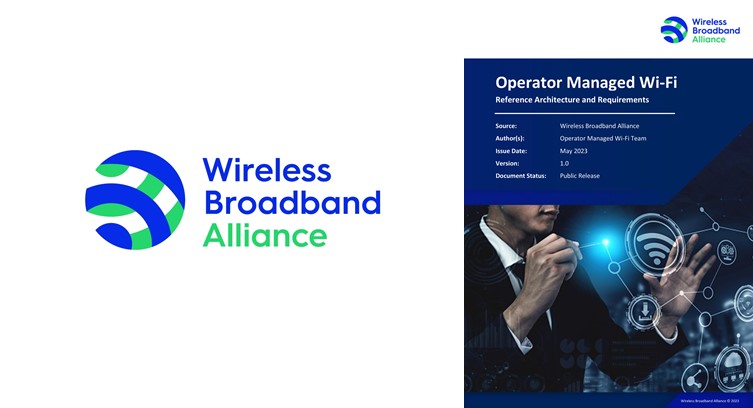The Wireless Broadband Alliance (WBA) yesterday announced the publication of a technical report outlining a new operator-managed Wi-Fi (OMWi) reference architecture. The proposed framework will combine multiple available standards to streamline Wi-Fi data collection, Wi-Fi management, configuration, and optimization of home networks, simplifying the analysis and decision-making process for carriers.
Consumers expect reliable, high-performance Wi-Fi networks that enable their Wi-Fi devices to work at home with little to no set-up required. The paper discusses the various deployment challenges this presents for operators, who need to balance the cost of management and deployment with growing consumer requirements.
Currently, there exist several different operator-managed Wi-Fi solutions in the market, each utilizing different proprietary or standard methods for data collection, communication between the Customer Premises Equipment (CPE) and the cloud, remote management, mesh formation, etc. Furthermore, each operator-managed Wi-Fi solution tries to solve the same problems in a different way, which yields non-interoperable and non-reusable solutions.
This results in considerable resources operators currently need to employ in order to navigate through the different techniques and standards available when delivering on end-user expectations. It also highlights the difficulties many operators still face when negotiating with vendors to ensure compliance with their own standards and requirements. The main problem put forth by the paper is that a holistic solution for an operator-managed Wi-Fi network, which incorporates the necessary standards into a reference architecture for the operators to use in their deployments, still does not exist.
WBA members led by Airties, British Telecom (BT), Deutsche Telekom and MaxLinear are seeking to simplify this analysis and selection process, leading to better resource optimization, while also allowing them to make more accurate claims when communicating their value proposition with end clients and users.
This paper represents the first phase of that journey, presenting an operator-managed Wi-Fi reference architecture that combines the benefits of all available standards, including Wi-Fi Alliance (WFA) Wi-Fi EasyMeshTM, Wi-Fi CERTIFIED Data ElementsTM, and Broadband Forum (BBF) User Services Platform (USP) Data Models TR-369 and TR-181. Wi-Fi Alliance EasyMeshTM, for instance, can be utilized as the standard interface for Wi-Fi data collection, Wi-Fi management, configuration, and optimization on home networks with a standalone gateway.
Operator Managed Wi-Fi: Reference Architecture and Requirements, is available as a free public download on WBA's website.
Sascha Dech, System Architect & Lead Developer User Interfaces at Deutsche Telekom
As an industry we are always trying to get faster internet speeds to our customers. While we are making progress in getting it to customers homes, we also see an increasing demand to get proper managed residential Wi-Fi solutions in place. Standardization of components helps us to deliver on our key promises, a great user experience as well as having a reliable and fast connection to the internet.
Tiago Rodrigues, CEO of the Wireless Broadband Alliance,
Wi-Fi and internet have become interchangeable terms in recent years. A user’s perceived quality of experience is therefore tied to the performance of their in-home Wi-Fi network. This is putting pressure on operators to better manage their residential Wi-Fi services. There are countless operator-managed Wi-Fi solutions currently on the market, all using different proprietary or standard methods for data collection, remote management, mesh formation, etc., making it extremely difficult for operators to provide a consistent level of service for their users. WBA and its members are seeking to change that with a new reference architecture that combines the best standards into one, holistic, cost-effective solution.




















